The grocery conglomerate’s original team member dishes on the early days, the company’s evolution and her passion for sustainability.
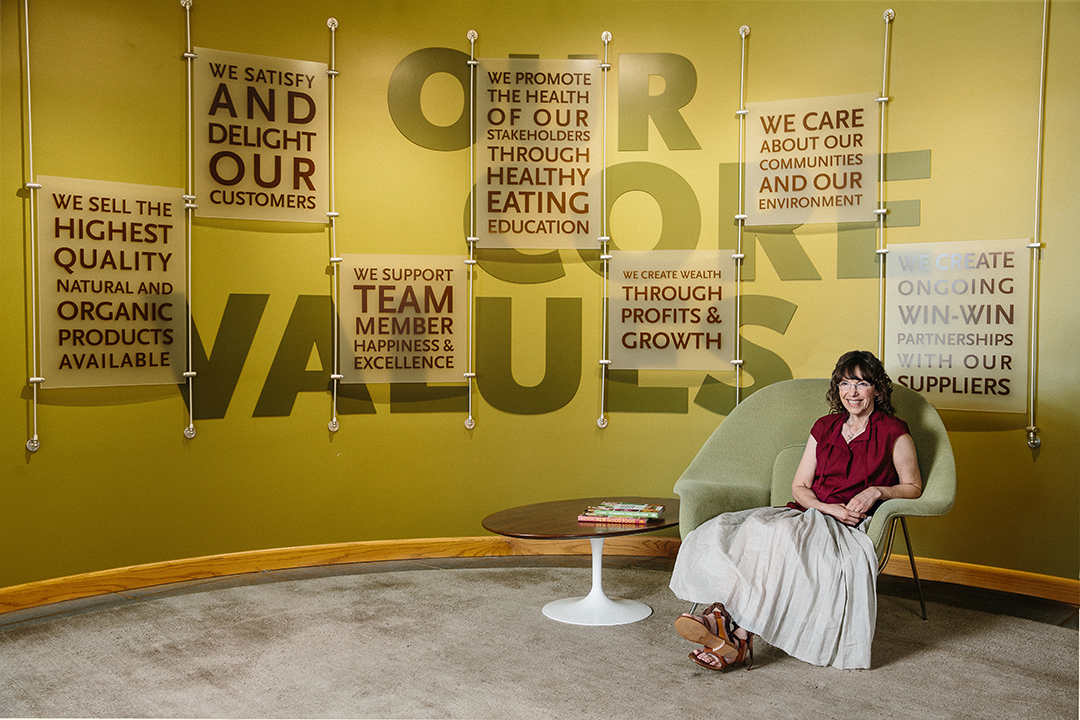 “Imagine the impact if every single person working for a company were able to be a creator and innovator.”
“Imagine the impact if every single person working for a company were able to be a creator and innovator.”
— John Mackey
When John Mackey founded Whole Foods Market in 1980, he couldn’t have anticipated that his modest grocery store on 10th Street and North Lamar Boulevard would explode into the now 421 stores found throughout North America and the United Kingdom. But it makes sense. At Whole Foods, the idea that every single person is a creator and an innovator is not only a goal for the company, it’s a reality.
Margaret Wittenberg joined “America’s healthiest grocery store” as one of the company’s original team members just four months after it opened its doors. An integral part of the development and evolvement of Whole Foods, Wittenberg has more than 40 years of experience in the natural- and organic-foods industry, and currently serves as Whole Foods Market’s global vice president of quality standards and public affairs. She oversees the company’s commitment to sustainability, played a key role in the creation of the National Organic Standards and has authored six books. In 2005, she was honored by the National Audubon Society with the prestigious Rachel Carson Award, and in 2014, was named by Fortune and Food & Wine Magazine as one of the most innovative women in food and drink.
With all of her accolades and accomplishments, education has been a central and vital theme throughout Wittenberg’s life. Growing up with five siblings in Northeast Iowa, she was an unusually adventurous eater and cook.
“I was always interested in food. Even as a child, I really enjoyed cooking and was encouraged to cook,” she says, noting that her mother was happy to have the help, with eight mouths to feed. “I was the one that wanted to try unusual things and the others didn’t. … I’m one that needs to understand how a product is grown, how it’s raised, how it works—everything about it—because I’m curious.”
Curiosity is what led her into the world of sustainability. After graduating college in Milwaukee, she opened a natural-foods store with her husband, Terry, in West Bend, Wis., a first for the small town. With anything new or unfamiliar comes a necessity for education, something the Wittenbergs spearheaded at their shop with informational and nutritional cooking classes for the community. As an “eternal student,” as Wittenberg likes to call herself, teaching has been a consistent outlet to stay informed and aware.
The more Wittenberg learned about organics and sourcing locally through her work with farmers in the West Bend area, the more invested she became in the sustainability of agriculture, animals and seafood, and the upholding of environmental standards, work that has continued throughout her career.
After 10 years in Wisconsin, Wittenberg decided to head South.
“I had a sister in Houston that thought we were probably the ‘Austin type,’ ” she says, laughing. “We saw that Whole Foods had opened a couple months before. We hadn’t known about it. … We went in and said, ‘Oh my gosh, we want to work here!’ So we did. We were the 24th and 25th employees of the company.”
Truly a trailblazer, Wittenberg serves on the board of the Whole Kids Foundation, The Organic Center and the American Botanical Council, and, in her current role, mentors the entire Whole Foods quality-standards team, which she helped to create.
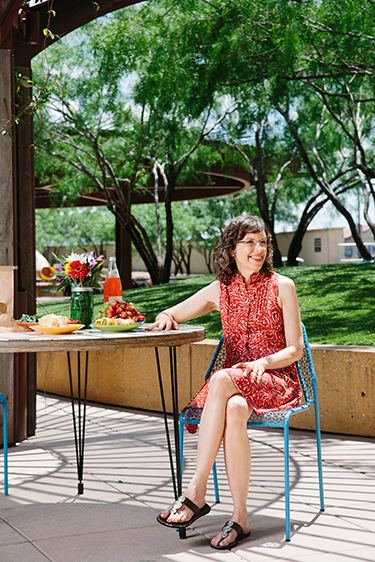 Wittenberg wrote Whole Foods’ first employee manual in the early ’80s in order to educate team members about the products in the stores. The manual became an important part of training, gaining momentum. Mackey, recognizing this, asked Wittenberg to write a book based on the employee manual, one that was targeted toward shoppers.
Wittenberg wrote Whole Foods’ first employee manual in the early ’80s in order to educate team members about the products in the stores. The manual became an important part of training, gaining momentum. Mackey, recognizing this, asked Wittenberg to write a book based on the employee manual, one that was targeted toward shoppers.
“Customers would see [the employee manual]on a counter next to the team member in the store…and kept wanting to buy it,” she says, which spurred her to write and self-publish Experiencing Quality: A Shopper’s Guide to Whole Foods, released in 1987.
When asked about the main differences in the culture of Whole Foods circa 1980s versus today, she doesn’t hesitate.
“Well, there’s certainly more people!” she chuckles. “Now there’re 88,000 team members, which just blows my mind. … In the early days, we just wanted to be the best we could be. We who worked in the store hadn’t thought about being a global company. People wanted the stores because they knew we were really passionate about what we were doing. And we attract a lot of team members like that, some people who are passionate already, others that come and say, ‘I know there’s something here, and I want to be a part of it.’
“Between the product we sell, the culture of people being a part of the program, being able to get their opinions in and ideas, everyone’s on a team. The culture is something we’ve worked hard on throughout the last 35 years because it’s an easy thing to lose if you don’t manage and take care of that.”
Along the journey of maintaining the Whole Foods teammember culture and the continuous process of education for staff and customers, a distinct community was built, brick by brick, into the international community it is today.
With quality standards at the top of mind, Whole Foods takes a holistic, multi-stakeholder approach, working with team members, growers and suppliers, non-governmental organizations (NGOs) and influential national boards, scientists and, most importantly, the community. Wittenberg explains she is constantly doing research on what’s going on in the world and what people are asking for from corporations, and then answering by incorporating that into the company’s model.
“The more you find out, the more you feel like you need to know more. Transparency is important to people these days,” she says. “You have to know what’s going on and be able to answer, look ahead. What are we going to need to be able to provide for our customers? That is our continual work, transparency. People have the right to know if something is or is not.”
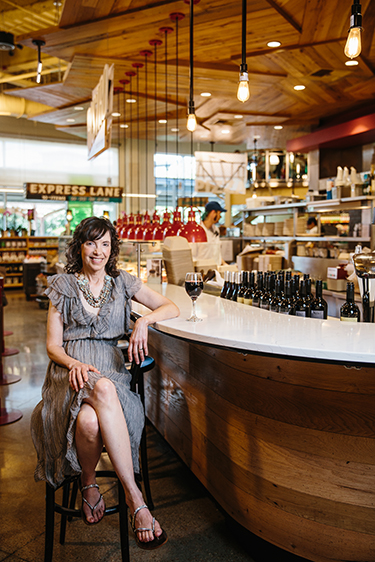 One of the reasons Wittenberg has been honored with a multitude of awards stems from creating authenticity and transparency within Whole Foods through her work with the USDA, the EPA, Organic Trade Association and the Marine Stewardship Council. Her latest project, started in 2013, is the call for genetically modified organism (GMO) and non-GMO labeling in all Whole Foods’ grocery stores. The goal is to have every single product labeled by 2018.
One of the reasons Wittenberg has been honored with a multitude of awards stems from creating authenticity and transparency within Whole Foods through her work with the USDA, the EPA, Organic Trade Association and the Marine Stewardship Council. Her latest project, started in 2013, is the call for genetically modified organism (GMO) and non-GMO labeling in all Whole Foods’ grocery stores. The goal is to have every single product labeled by 2018.
Wittenberg encourages people who may not shop organically to shed their preconceived notions of what it means to shop organic. We all know that buying organic benefits the body, mind and our world’s ecosystem, but what you may not know is that it can be done affordably. Whole Foods aims to provide options for people: Some of their best-kept secrets include the $3 tacos at the flagship store (They’re huge!) and the $3 artisan cheese bin.
“With organic, there’s so many options now. It’s something that we’ve really worked on to have a full range of items for people to choose,” Wittenberg says. “We have people in the stores that, if you’re ever interested, they can show you around.”
When asked about her greatest accomplishments of her extensive career, she thinks for a moment before answering.
“Being able to develop a quality-standards team. That’s unusual in a company…people who really focus on looking at the ingredients and the sustainability and having that be part of the [company’s] DNA. Within that, I’ve always loved doing the animal-welfare side of [quality standards], meat standards and seafood standards. I did a lot of work in the early days to get those programs started,” she says, always keeping the customer in mind, “and it has to be usable for it to be helpful.”
Wittenberg’s energy and positivity will continue to inspire the next generation of Whole Foods. Since 1981, she has upheld the company’s dream by being a creator and innovator through her passion for the environment, for nutrition, for learning, teaching and mentoring. And she’s not slowing down any time soon. You can find her at Whole Foods, fighting for a healthier, more authentic, transparent future, not only for Austin, but for the world.
WHOLE FOODS GIVES BACK
On Memorial Day 2015, Austin took a devastating blow from extreme flashflooding damage. We witnessed disturbing images of Shoal Creek Saloon and House Park submerged under water. Coincidentally, the last time a similar flood hit Austin was also on Memorial Day, in 1981, causing the original Whole Foods location to close because of extreme water damage.
Whole Foods had to completely rebuild its store and was able to reopen after a month, thanks to the love and support of the Austin community. “I’ve been [at Whole Foods]for a long time and the connection of community and authenticity is really important to me. The roots run deep,” Margaret Wittenberg says. “[Founder] John Mackey has always said [the 1981 flood]was probably one of the best things that ever happened to us because it really solidified us as a company, understanding who we are and how we fit in with the community. We were intertwined and needed to work together in order to build it back. … We knew that if we could come back after that, we could do anything.”
Paying it forward in 2015, Whole Foods has given $1 million in emergency loans to neighboring Austin establishments affected by the flooding. Additionally, all Austin Whole Foods Markets are collecting donations for the American Red Cross of Central Texas.
THE ULTIMATE FOODIE RESOURCE
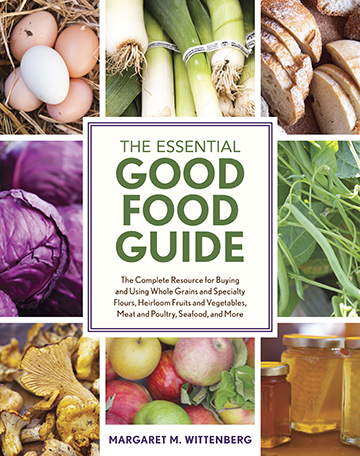 The latest book from Margaret Wittenberg, The Essential Good Food Guide: The Complete Resource for Buying and Using Whole Grains and Specialty Flours, Heirloom Fruit and Vegetables, Meat and Poultry, Seafood, and More, (Ten Speed Press, 2013) breaks down various food categories and explains their benefits while also offering tips on how to cook items readers might be less familiar with. The idea is to get away from the convenience of processed foods and empower people to be able to cook whole foods from scratch in a convenient manner.
The latest book from Margaret Wittenberg, The Essential Good Food Guide: The Complete Resource for Buying and Using Whole Grains and Specialty Flours, Heirloom Fruit and Vegetables, Meat and Poultry, Seafood, and More, (Ten Speed Press, 2013) breaks down various food categories and explains their benefits while also offering tips on how to cook items readers might be less familiar with. The idea is to get away from the convenience of processed foods and empower people to be able to cook whole foods from scratch in a convenient manner.
“My goal [for readers]is to explore, to be open to trying different things and to have fun with the food,” Wittenberg says. “In my humble opinion, there’s no one perfect diet for everybody.”
Given the many contradicting messages about what you should avoid eating, Wittenberg wanted to create a resource that simply focuses on whole foods and how we should all ideally be eating.
“[The book has] a good message: Rather than being fearful of doing the right thing,” she says, “the encouragement is to play with the food, learn about it, enjoy it, but understand that you’re finding your own path by exploring what’s out there.”
A MEAL WITH MARGARET
Margaret Wittenberg’s passion for concocting nutritious recipes and teaching cooking classes is rooted in her childhood years: sharing meals with her family of eight, exploring unusual foods, enjoying her mother’s delicious and simple cooking and that special Sunday breakfast (pancakes and bacon, of course) her father would prepare for her and her bothers and sisters.
“The idea that food is always better when it’s shared really resonates, and I got that from [my parents]. They laughed a lot,” she says. “Being able to share [laughter]with other people really helps to make the most simple meal wonderful.”
Margaret Wittenberg’s Garden Frittata
Serves three to six
“Sage, parsley, rosemary, chives, mint, several varieties of thyme and basil: You’ll always find these fresh herbs in my summer garden. Beyond their beauty, flavor and aroma, they can make the simplest salad, sandwich or entree a delicious, stylish masterpiece, whether as a garnish—whole or chopped—or as a seasoning within.
“And that goes for my summertime frittata too! Chives provide the subtlest of onion flavor, and lemon thyme, parsley and sage make for a stunning baked-in garnish.
“An 8-inch cast-iron frying pan is a must so the frittata can be started on the stove and finished in the oven.”
Ingredients:
2 tablespoons olive oil
1/2 red bell pepper, diced
1/2 yellow bell pepper, diced
1 celery stalk, finely diced
1 tablespoon chives, chopped
6 eggs
Salt to taste (“I use Maldon Sea Salt. Although it is more of a finishing salt, it does wonders in this frittata.”)
4 small sage leaves
2 sprigs lemon thyme
2 sprigs parsley
Directions:
Preheat the oven to 350 degrees, placing an oven rack in the top third position within the oven.
Heat 1 tablespoon of the olive oil in the cast-iron frying pan over low-medium heat and saute the red and yellow bell peppers, celery and chives. Set the veggies aside.
Lightly beat the eggs and add salt to taste. Mix the veggies with the eggs.
Add the remaining 1 tablespoon of olive oil to the cast-iron frying pan. Add the egg mixture and let it cook for about five minutes over medium heat until the edges start to set, as if you are making an omelet. However, resist the temptation: Do not stir or lift up the edges of the cooking egg mixture. Instead, while it is cooking, put your attention into arranging the fresh herbs on top as you wish. Then transfer the eggs and cast-iron pan from the stove to the top third rack in the oven and bake for about nine minutes to complete the process. Remove from the oven and let it cool before slicing into six wedges.
This garden frittata can be enjoyed warm or cold for a simple summer breakfast, lunch or dinner.
WOMEN LEADERS OF WHOLE FOODS MARKET
 Lynda Berrios
Lynda Berrios
Southwest Regional Local Forager
Lynda Berrios has been with Whole Foods for the past 10 years. She works with suppliers, the community and peers in the Texas food scene, and enjoys helping small producers and artisans flourish.
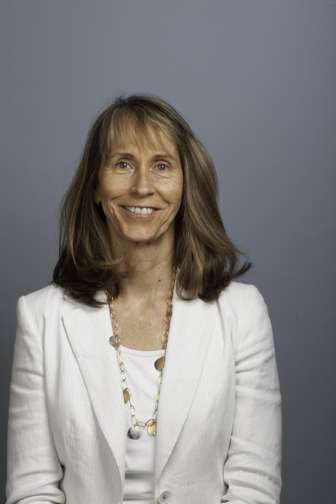 Glenda Flanagan
Glenda Flanagan
Chief Financial Officer
Glenda Flanagan joined Whole Foods as CFO in 1988. Playing a major role in the development of the company, she serves on the board of directors for Whole Planet Foundation, Whole Cities Foundation and Whole Kids Foundation. Margaret Wittenberg describes Flanagan as “the epitome of wisdom,” and in February 2015, Fortune cited her as the longest-sitting CFO among the 58 women CFOs at Fortune 500 companies.
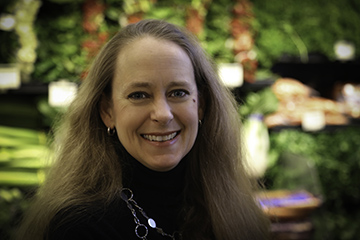 Betsy Foster
Betsy Foster
Global Vice President of Business Development
“Betsy is brilliant in business,” Wittenberg says. Joining Whole Foods in 1994, Betsy Foster oversees all mergers and acquisitions for the company, international expansion, strategic partnerships, dark space, lease administration, the Local Producer Loan Program and the Strategic Equity Investment Fund, the Whole Foods Healthy Eating initiatives and healthy-eating education.
 Roberta Lang
Roberta Lang
Global Vice President and General Counsel
Roberta Lang oversees all legal affairs for Whole Foods and provides strategic business advice for the leadership of the company. She started with Whole Foods in 1998 and is a founding board member of the Whole Planet Foundation, whose mission is to create economic partnerships with developing world communities. Wittenberg describes her as having “a big heart” and that her “wonderful spirit has helped the company in so many ways.”
 Kate Lowery
Kate Lowery
Global Public Relations Director
Kate Lowery is responsible for all external communications, including consumer public relations, business and financial public relations, and issues management. She joined Whole Foods in 2001 and has played a major role in building the brand nationally.
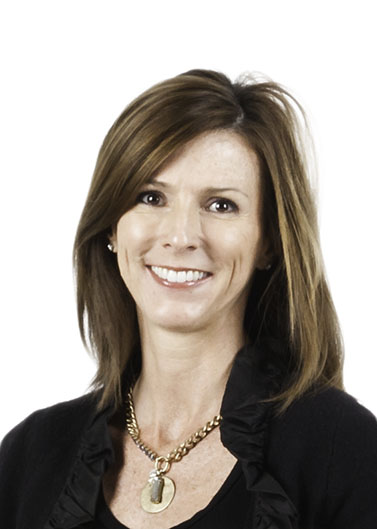 Cindy McCann
Cindy McCann
Global Vice President of Investor Relations
A part of Whole Foods since 1996, Cindy McCann is responsible for the strategic direction of the investor-relations program, and works with the executive team to communicate the company’s operating results and future outlook to the financial community. According to Wittenberg, she does this “with grace and style.”
 Tricia Yost
Tricia Yost
Global Executive Coordinator Tax Accounting and Reporting
Tricia Yost took a position at Whole Foods in 1996, building the tax function from the ground up. She’s responsible for strategic oversight and direction of the global tax function, as well as tax accounting and reporting.
A MILLENNIAL APPROACH : 365 BY WHOLE FOODS MARKET
Whole Foods recently introduced the name of its new store concept targeted toward millennials, 365 By Whole Foods Market. 365, which is set to open next year, looks to cater to customers who have found Whole Foods inaccessible. For example, Trader Joe’s sells twice as much per square foot as Whole Foods, making it more of a draw for younger shoppers. The new 365 chain will have cheaper offerings and will also make the Whole Foods brand more ubiquitous.


